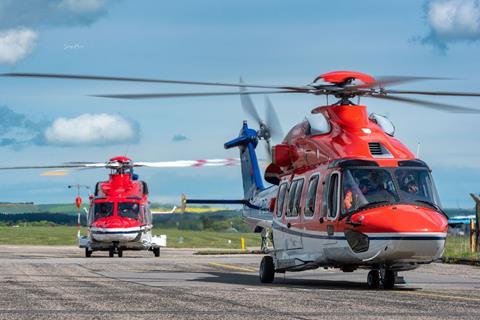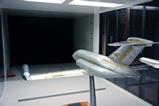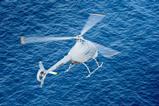Airbus Helicopters is planning to aggressively ramp up production of its H175 super-medium-twin, quadrupling output by 2026 to deal with surging interest from the oil and gas market.
Although just 56 examples of the 7.8t helicopter have been delivered since service entry in 2014, the airframer now sees a looming wave of demand for the type, says programme chief Jerome Fagot.

“The target is to increase drastically our production, somehow multiplying by four the level of production by 2026,” he says.
Cirium fleets data show that just three units were handed over in 2023, on top of four helicopters the previous year.
And while just 14 orders were booked in 2023, a series of framework agreements signed last year have given the manufacturer increased confidence in future demand, Fagot told journalists during a 13 February briefing.
A total of 50 helicopters were covered by those agreements – giving operators flexibility around the timing of deliveries – the majority of which are not yet included in the backlog.
“It gives us a real sense of the demand,” adds Fagot. “It gives us perspective of the market for the next four to five years.”
In September 2023, US operator PHI disclosed a framework agreement with the airframer covering the acquisition of 20 H175s and eight H160s medium-twins.
With a bow-wave of demand looming, Fagot says the airframer’s immediate priority to ensure the supply chain is ready for the ramp up and then to make good on its production promises.
“The ability to provide slots is our main challenge if we want to capture market share,” he says.
Lead time for a basic oil and gas-configured H175 is around 12 months, or 18-24 months for a more complex SAR fit-out, but securing a delivery slot is a further complexity, he adds.
Driving demand is a buoyant oil and gas support sector that is increasingly seeking alternatives to heavier helicopters, notably the Sikorsky S-92. Fagot estimates that around two-thirds of the near-200 S-92s in service could ultimately be replaced by super-medium types like the H175 and rival Leonardo Helicopters AW189.
Meanwhile, the company continues to drive maturity into the Pratt & Whitney Canada PT6-powered platform and add new features.
Tests of a full ice protection system (FIPS) are ongoing, using H175s currently located in Norway and Canada. The test campaigns should be concluded by April, followed by a certification process.
Fagot says the company has already secured an undisclosed customer “somewhere in Europe” for the FIPS-equipped configuration. He declines to be more specific but says demand is mainly from civil operators in Norway and Canada, and prospective military customers.
The H175’s maintenance burden is also being cut, he says: the hours required for inspections at 400 and 800 flight hours are being reduced, and the time before overhaul for the main gearbox extended from 1,600h to 2,400h, with the “ambition” to eventually reach 5,000h.
In addition, certification activities with the North American regulators are continuing; Fagot says US approval is targeted for 2025, while Canada should follow in 2026.
Airbus Helicopters also continues to tout the potential for a military M-model variant of the H175, for example offering the type to the UK for its New Medium Helicopter requirement.
Fagot says the H175M is attracting interest from several prospective customers, in both high- and low-end configurations.
Despite the absence of firm orders for the H175M, Fagot says Airbus Helicopters has invested in its development to “de-risk some technology bricks, allowing us to provide a time to market that is quick enough”.































